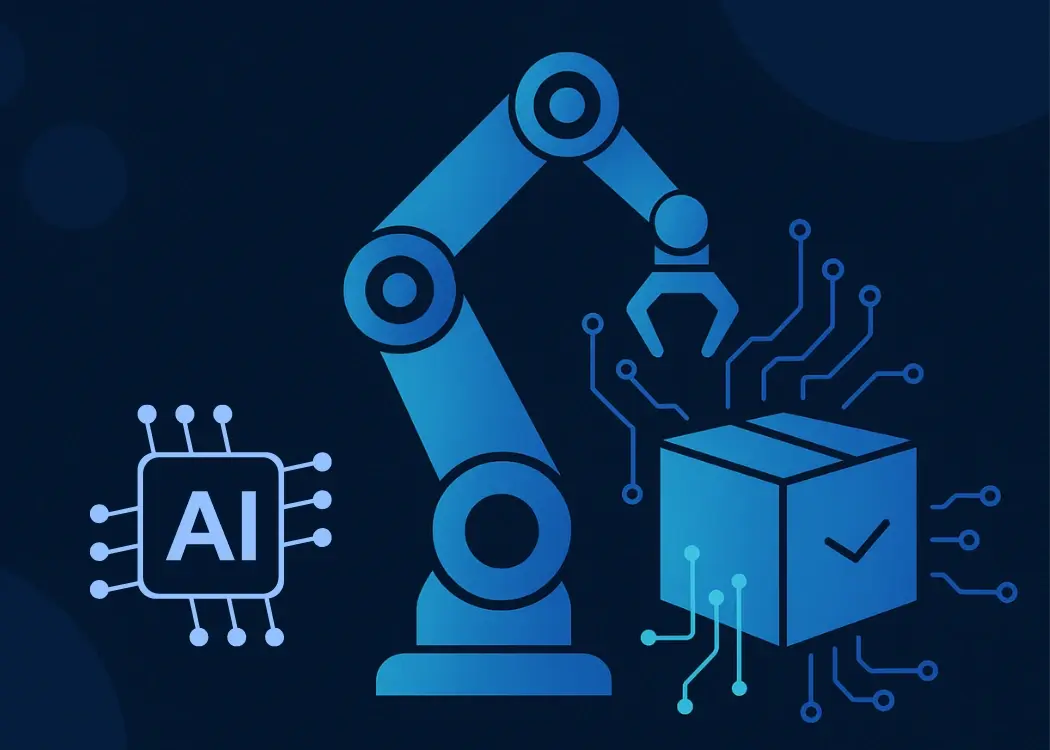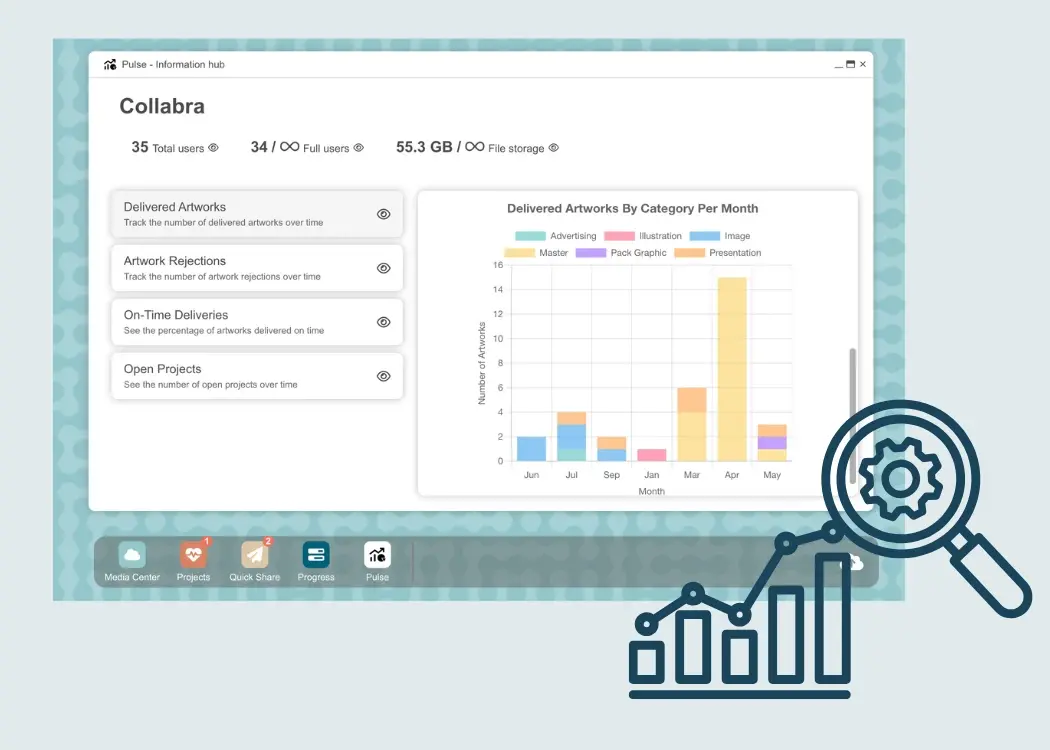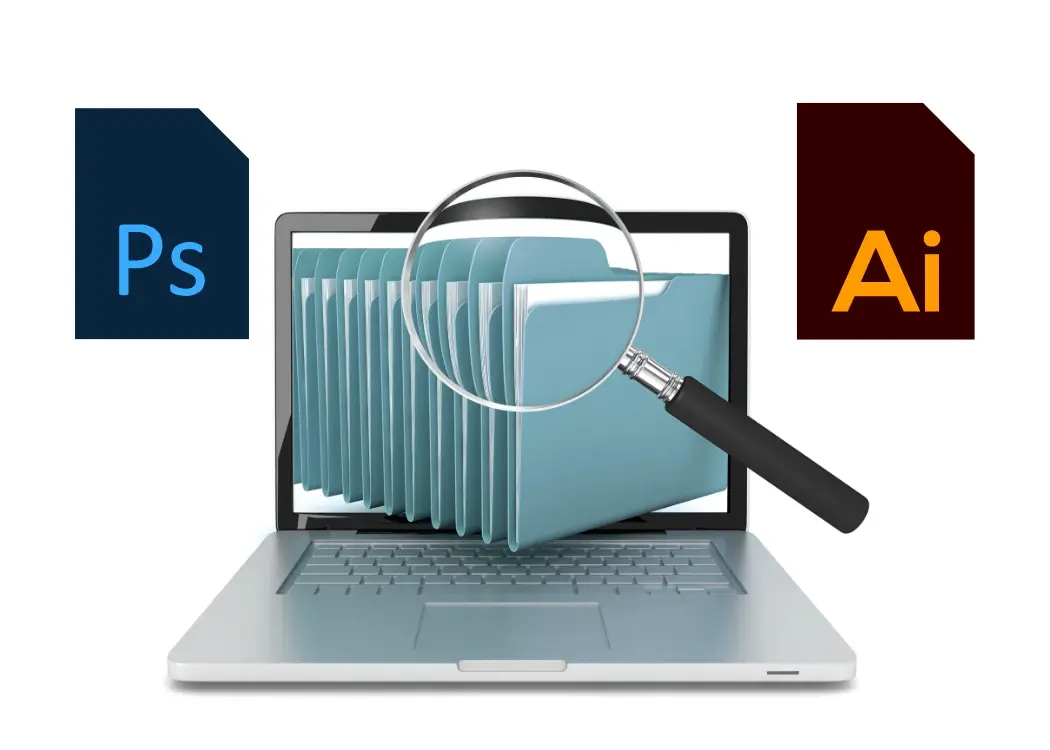Key KPIs to improve packaging design and speed to market
In today's highly competitive market, packaging design is not just about creative flair—it's a critical operational process that can influence brand...
4 min read
 Ekaterina Skalatskaia
:
June 17, 2025 at 8:15 AM
Ekaterina Skalatskaia
:
June 17, 2025 at 8:15 AM

E-commerce has exploded in recent years, with more people shopping online than ever before. This shift has created new demands on how products are packaged, shipped, and experienced. Traditional packaging methods are being replaced or upgraded to meet the growing needs of online consumers. At the heart of this change are two powerful technologies: Artificial Intelligence (AI) and Big Data.
These tools are revolutionizing the packaging process, making it smarter, faster, and more personalized. In this article, we’ll explore how AI and Big Data are transforming packaging in the e-commerce world.
Online shopping is very different from shopping in physical stores. In a store, packaging needs to catch the eye on the shelf. For e-commerce, packaging must also be durable, efficient for shipping, and create a good unboxing experience.
Some of the biggest challenges e-commerce companies face include:
Protecting items during shipping
Reducing packaging waste
Keeping shipping costs low
Delivering a great customer experience
To meet these needs, companies are turning to AI and Big Data.
We're here to help. Get in touch with our team and discover how Cway can streamline your artwork approvals and project management.
AI refers to computer systems that can perform tasks usually requiring human intelligence. These tasks include problem-solving, learning, pattern recognition, and decision-making.
In packaging, AI can:
Suggest packaging designs
Predict product demand
Improve sustainability
Personalize packaging for customers
Big Data is the massive amount of information collected from various sources. This includes data from customer orders, delivery tracking, social media, and product returns.
By analyzing this data, companies can:
Spot trends
Improve packaging materials and design
Identify issues before they become big problems
Together, AI and Big Data help businesses create better packaging strategies.
Experience the power of smart packaging workflow analytics. Start your free trial and take control of your projects today.
AI tools can analyze data from millions of past purchases, shipping records, and product reviews. This helps companies design packaging that fits the product perfectly and minimizes damage.
For example, if a certain item tends to break during shipping, AI can suggest stronger materials or a better shape for the box. This reduces returns and increases customer satisfaction.
Benefits:
Fewer damaged products
Lower return rates
Happier customers
Personalized packaging used to be time-consuming and expensive. Now, AI and data-driven printing allow brands to create custom packaging for individual customers.
Imagine getting a package with your name on it, or special messaging for your birthday. These small touches can turn a regular delivery into a memorable experience.
Benefits:
Builds stronger customer relationships
Encourages repeat purchases
Increases brand loyalty
Big Data can track real-time sales trends and product demand. AI uses this data to help companies forecast how much packaging material they’ll need and when.
This means businesses can avoid overstocking or running out of materials. It also helps reduce waste and costs.
Benefits:
Reduced material waste
Lower storage costs
Faster production times
Consumers today care more about the environment. AI can help companies choose packaging materials that are sustainable and recyclable. Big Data can show which options perform best over time.
For example, AI might recommend switching from plastic to biodegradable paper based on customer preferences and performance data.
Benefits:
Supports eco-friendly goals
Appeals to conscious consumers
Reduces carbon footprint
In e-commerce, product demand changes quickly. AI can monitor these shifts and suggest changes to packaging sizes, shapes, or materials to save money or meet new needs.
This might mean switching to a smaller box when shipping costs rise or using bulk packaging during peak seasons.
Benefits:
Cost savings
Increased flexibility
Faster response to market trends
The unboxing moment is a powerful branding tool. AI can help design packaging that enhances this experience based on customer feedback, reviews, and social media analysis.
For example, if data shows that customers love creative tissue paper or eco-friendly inserts, AI can recommend adding these features.
Benefits:
Boosts social sharing and word-of-mouth
Makes a lasting impression
Reinforces brand identity
Big Data can reveal packaging problems quickly. If certain items are often returned due to damage, the system flags it. AI then suggests changes in design or materials.
This rapid response prevents further losses and helps maintain product quality.
Benefits:
Quick fixes for ongoing issues
Better quality control
Reduced customer complaints
Amazon is a leader in using AI and Big Data for packaging. Their "Frustration-Free Packaging" program uses AI to test new box designs and reduce waste. They also personalize packaging for gift purchases and use data to improve delivery efficiency.
Other e-commerce giants are following suit, making AI and data standard tools in packaging strategy.
Many packaging teams feel they lack the technical background to implement AI tools. Terms like machine learning and predictive analytics sound intimidating.
Reality Check:
You don't need to be a data scientist to use AI.
Most AI tools designed for packaging — like generative design platforms, trend predictors, and material optimizers — come with user-friendly interfaces. Think Photoshop meets smart assistants.
Tip:
Start with low-code or no-code AI tools. Upskill through short workshops or online courses focused on AI for creative professionals.
There’s a perception that AI means high upfront investment — new software, new hires, new training.
Reality Check:
Yes, there are costs. But there are also serious savings: reduced design cycles, less material waste, better prediction of market success — leading to fewer costly redesigns.
Tip:
Start small. Pilot an AI tool for one project — for example, using AI to optimize color palettes or prototype packaging virtually before committing to print runs.
“We’ve always done it this way” is a powerful cultural barrier. Introducing AI can feel like a threat to traditional design processes.
Reality Check:
AI doesn’t erase creativity; it enhances it. The most successful teams treat AI as a creative partner, freeing them to focus on bigger ideas while AI handles the tedious stuff — data analysis, initial concepts, A/B testing.
Tip:
Position AI adoption as a support to the creative team, not a replacement. Pilot programs and success stories inside the organization can help shift mindsets.
As AI continues to reshape creative industries, staying informed about the latest AI trends and tools for 2025 is essential for professionals looking to maintain a competitive edge—especially those in graphic design and packaging. These innovations are redefining how designers approach everything from layout automation to material selection and versioning at scale. At the same time, understanding the limitations of AI in artwork management helps teams recognize where human insight remains irreplaceable, particularly when it comes to brand consistency, compliance, and nuanced design judgment.
For those working specifically in the packaging space, there's a growing body of knowledge on how AI is actively empowering graphic packaging designers with smarter, faster, and more responsive tools that enhance both efficiency and creative flexibility. And for creatives tapping into the potential of generative AI, learning how to write AI art prompts effectively can unlock a new level of visual storytelling—whether you're designing mockups, prototypes, or full campaigns driven by machine intelligence.

In today's highly competitive market, packaging design is not just about creative flair—it's a critical operational process that can influence brand...

Need to view PSD files but don’t have Photoshop? You’re not alone. PSD (Photoshop Document) files are packed with layers, masks, and design elements...

If your team creates packaging—whether it’s for yoghurt tubs, medicine boxes, or shampoo bottles—you know how challenging it can be to manage all...